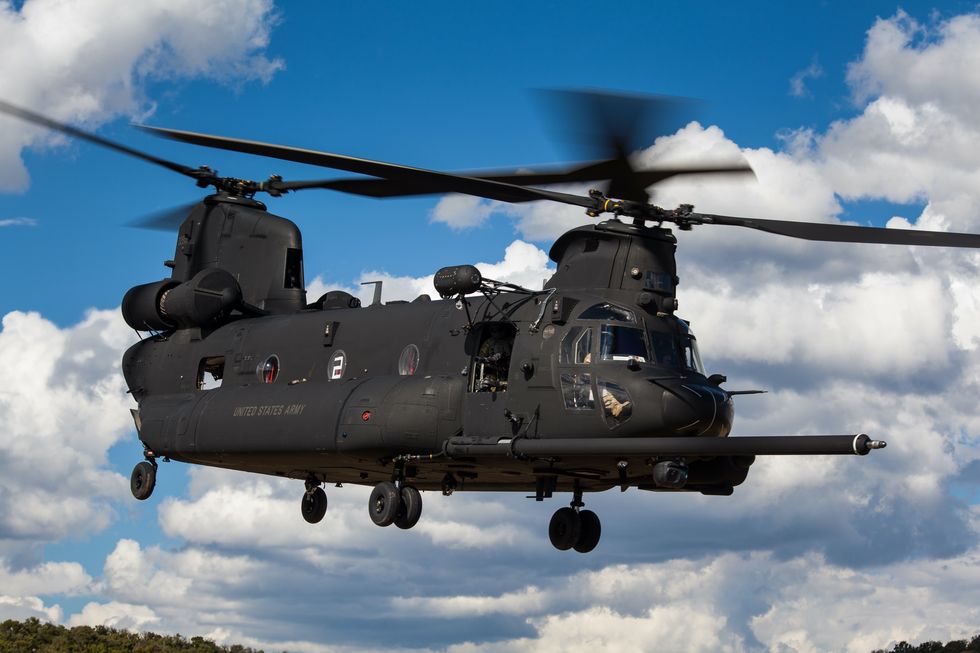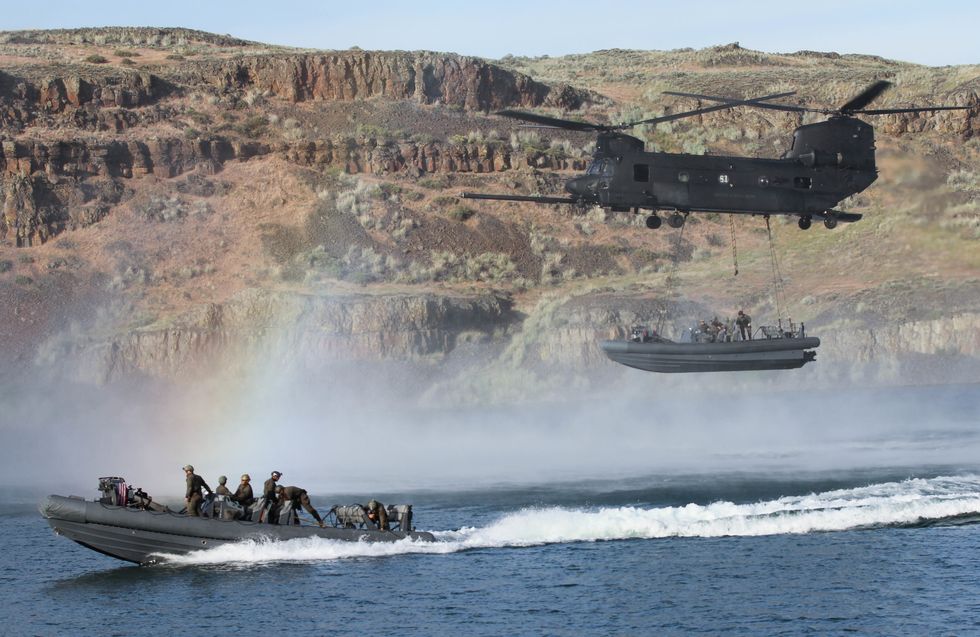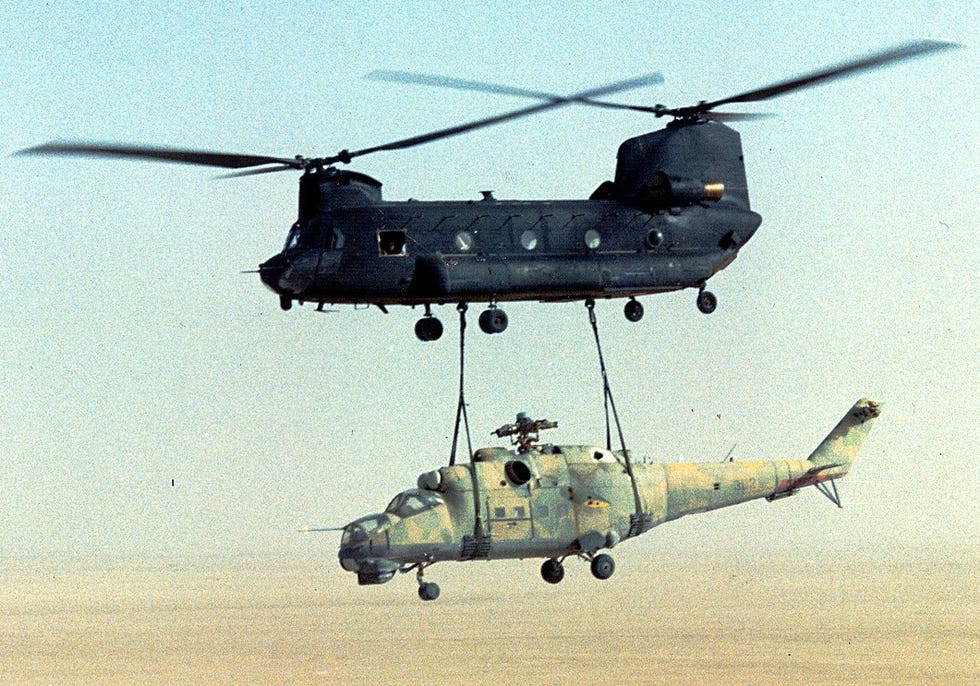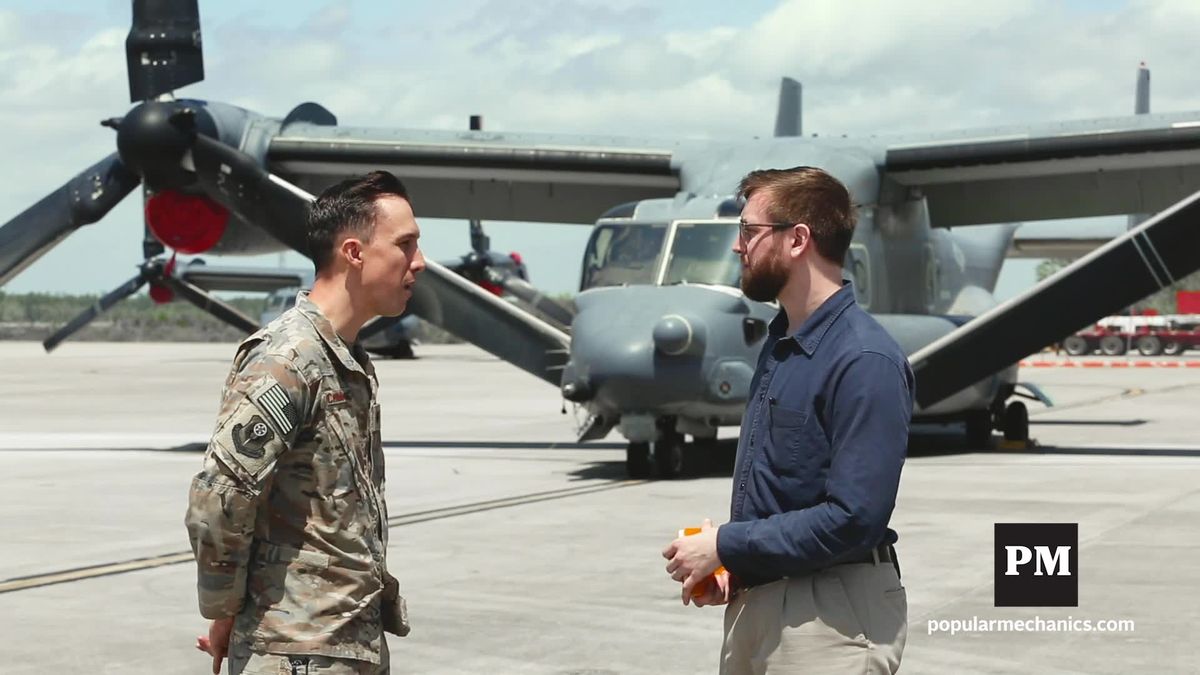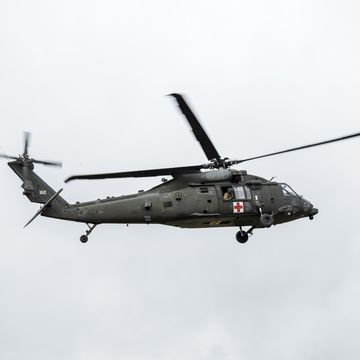- U.S. special operations forces have received the first of two dozen MH-47G Block II helicopters.
- The helicopter is a modification of the CH-47 Chinook used by mainstream U.S. Army units.
- MH-47 helicopters have been involved in many secret commando missions, including a Cold War mission to steal an attack helicopter.
U.S. Special Operations Command has accepted the first of two dozen new MH-47G Block II heavy lift helicopters. The MH-47G Block II is a heavily modified CH-47 Chinook helicopter, whose basic design dates back to the Vietnam War. The Block II will be flown by the 160th Special Operations Aviation Regiment (Airborne), the special operations aviation branch of the U.S. Army.
🚁You like badass choppers. So do we. Let's nerd out over them together.
Boeing, the manufacturer of the MH-47G Block II, delivered the first helicopter to Army Special Operations Command on September 1. Boeing will produce 23 more choppers for a total potential cost of $602 million, which works out to about $25 million per aircraft.
The Block II will replace older MH-47E helicopters in Army service. The MH-47 is flown exclusively by the 160th Special Operations Aviation Regiment, part of Army Special Operations Command, from Fort Campbell in Kentucky, Hunter Army Airfield in Georgia, and Fort Lewis in Washington.
The MH-47G is a large transport helicopter typically used on special operations raids. It’s capable of a cruise speed of 120 knots, a dash speed of 170, and can carry up to three dozen troops. A large, twin-bladed helicopter, it has the ability to pack two dozen or more commandos, carry away large numbers of prisoners and items of intelligence value, and transport support weapons, light vehicles, and field artillery.
A typical raid mission could see a MH-47 carry an assault, security, or quick reaction force consisting of Delta Force operators, Navy SEALs, U.S. Army Rangers, and Air Force special tactics squadron airmen.
Boeing has heavily modified the helicopter for the rigors of special operations service. The most obvious example is the mid-air refueling probe extending from the helicopter’s nose, which gives it theoretically unlimited range.
The MH-47G also includes advanced, digital avionics, a rescue hoist, a multi-mode radar for flying low to the ground at night and bad weather, electronic countermeasures, and a Fast Rope Insertion Extraction System (FRIES) for quick insertion and extraction of troops and equipment. The helicopter is also equipped with two M134 7.62-millimeter miniguns for self defense and a single M60D medium machine gun.
New to the Block II is an improved drivetrain that increases torque by 9 percent, improved fuel tanks that carry more fuel, a strengthened fuselage to handle heavier loads, and new, improved rotor blades. Combined, these features allow the Block II to carry more troops and equipment than previous models, for a total maximum carry capacity of 22,000 pounds.
The MH-47 series has a long history with the 160th SOAR. The helicopters were first acquired in the 1980s. In 1988, the regiment used two -D model helicopters to fly 500 miles at night in order to snatch a Soviet-made Mi-24 “Hind” helicopter. The helicopter, abandoned by Libyan forces in an aircraft hangar in Chad, was prized by U.S. intelligence as an example of Soviet attack helicopter technology.
The heavily modified Chinooks have also played important roles in the wars in Iraq and Afghanistan, particularly in the execution of raids. In 2011, MH-47Gs were used in the raid on Osama bin Laden’s compound in Pakistan. Four -G models were used in the raid; two accompanied the main raiding force all the way to Abbottabad, Pakistan, while two others landed just inside Pakistan, loaded with a quick reaction force of SEALs and bladders of extra aviation fuel.

Kyle Mizokami is a writer on defense and security issues and has been at Popular Mechanics since 2015. If it involves explosions or projectiles, he's generally in favor of it. Kyle’s articles have appeared at The Daily Beast, U.S. Naval Institute News, The Diplomat, Foreign Policy, Combat Aircraft Monthly, VICE News, and others. He lives in San Francisco.

